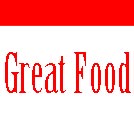|

|

|

|
Veal is the name applied to the meat of young catle. Though veal can be produced from a calf of either sex and any breed,
most veal comes from male calves (bull calves) of dairy cattle breeds. This
kind of meat is at its best in animals that are from 6 weeks to 3 months
old when killed.
Types of veal:
- Slink veal comes from an unborn, premature or stillborn calf. Unborn
calves are sometimes found when an adult cow is slaughtered and happens
to be pregnant at the time of slaughter. Meat from unborn calves is now
illegal for human consumption in the U.S., Canada and other countries
- Meat
from a
calf that has not reached the age of 3 weeks is called bob veal. Most
bob veal is from calfs
slaughtered when only a few days old and meat is pale, dry, tough, and
hard to digest. In many countries the laws strictly forbid the sale of
bob veal for
food, but constant vigilance must be exercised to safeguard the public
from unscrupulous dealers.
- Milk-fed veal (or formula-fed veal) is from calves that are
raised on a milk formula supplement. The meat colour is ivory or creamy
pink, with a firm, fine, and velvety appearance. They are usually
slaughtered when they reach 18–20 weeks of age, 450 to 500 pounds (200
to 230 kg).
- Grain-fed veal(or
non-milk vea) is veal from calves that are raised on grain, hay, or
other solid food, in addition to milk, and are slaughtered at an older
age, 22 – 26 weeks of age, about 650 to 700 pounds (290 to
320 kg). The meat is usually marketed as calf, rather than veal
and the meat may be darker with more fat.
- Pasture-raised veal (or free-raised veal) is from calves are raised in the pasture with unlimited access to
mother's milk and pasture grasses. They are not administered hormones or
antibiotics. The meat is a rich pink color. Free-raised veal is typically lower in
fat than other veal and calves are slaughtered at 24 weeks of age.
- Special-fed
veal is from calves fed a balanced milk
or soy-based diet one fortified with 40 essential nutrients, including
essential amino acids, carbohydrates, fats, and other dietary minerals
and vitamins. As of 2013, the majority of veal calves in the USA are
special-fed.
- Rose veal in the UK
(generally called young beef in Europe), is from calves raised on farms
in association with the UK Royal Society for the Prevention of Cruelty
to Animals' Freedom Food
programme. Its name comes from its pink colour, which is a result of
the calves being slaughtered at or after 35 weeks (8 months up to 12
months).
The nature of veal can be more readily comprehended by comparing it
with beef. Veal is
lighter in color than beef, being more nearly pink than red, and it
contains very little fat. The tissues of veal contain less nutriment than those of beef, but
they contain more gelatine. Generally, veal is more expensive than beef from older cattle.
|
|
|

|

|
 |







